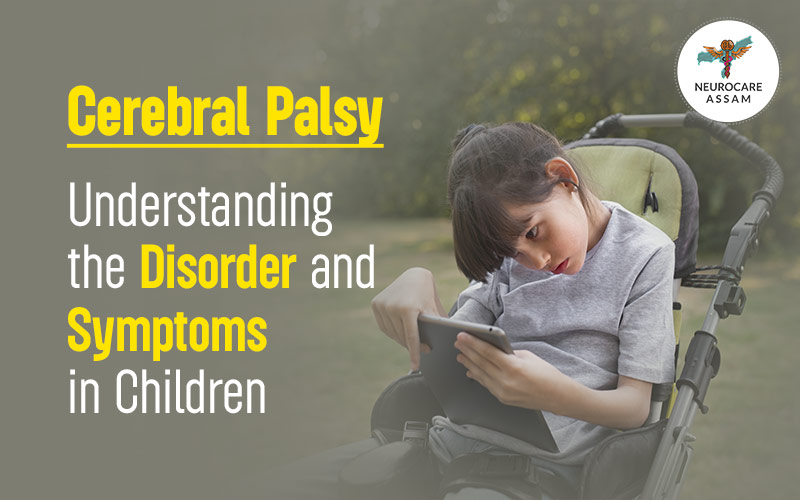
Cerebral Palsy: Understanding the Disorder and Symptoms in Children
Many youngsters endure cerebral palsy (CP),
a physical and mental health condition that hampers motor skills and
coordination due to nerve-related illnesses. Cerebral palsy (CP) encompasses a
range of physical and psychological conditions affecting a child's motor
abilities. The condition varies from person to person and often results from a
brain injury occurring early in life, during labour, or even before birth. The
impact is significant, with nearly half a million children and adults across
the globe living with cerebral palsy. While not all cases of CP are caused by
birth-related brain injury, some children develop it during the crucial
developmental stages of the brain after birth.
Parents and medical professionals must
grasp the signs and conditions associated with cerebral palsy in order to
effectively treat the disorder in its early stages.
Symptoms of Cerebral Palsy in Children
Cerebral
palsy symptoms might differ from child to child; however, some typical ones
have been briefly explained in the following:
There are several symptoms that children
with cerebral palsy display that can be used to diagnose the illness. Some kids
could show subtle symptoms like trouble walking, standing, or synchronising
their motions. Some children may have difficulty swallowing and speaking,
completely lose their ability to coordinate their muscles, struggle to walk and
maintain their balance, or have difficulty gripping objects. Other typical
symptoms include excessive drooling, an altered muscular tone, and difficulty
speaking. It's crucial to remember that these symptoms can range in intensity
from minor to severe and that they might get better or worse over time. The
intensity of these symptoms can vary from moderate to severe and can
progressively worsen over time.
Reasons Behind Cerebral Palsy
Many different things can lead to cerebral
palsy; there is no end to the potential causes. Serious head injuries from
falls, accidents, or physical abuse are a few possible causes. Furthermore,
whether the injury happens in early infancy, during pregnancy, or at labour,
cerebral palsy may be linked to a brain injury. Infections with meningitis or
encephalitis, which can harm the brain and its processes, are another known
risk that can lead to the development of cerebral palsy. Cerebral palsy also
has another known risk factor: insufficient oxygen delivery to the brain after
childbirth. Healthcare practitioners can create efficient treatment plans to
reduce symptoms and improve the quality of life for people with this diagnosis
by identifying and treating the underlying cause.
Treatment for Cerebral Palsy
Cerebral palsy cannot be cured; however, it
can be well controlled. Depending on the needs of the patient, treatment
options could include medication, surgery, and other procedures. For kids with
cerebral palsy, therapy is essential to enhancing their quality of life.
Children can overcome obstacles brought on by their condition and gain
necessary abilities with the aid of speech therapy, physical therapy,
occupational therapy, and other therapeutic approaches.
Identifying the root cause of cerebral
palsy is crucial, as it serves as a fundamental stepping stone in the
formulation of a comprehensive treatment plan. Moreover, the future outcome and
long-term results for those who are diagnosed with cerebral palsy can be
greatly impacted by the origin of the disorder. Medical doctors can better
understand the type and severity of brain damage and develop more targeted
treatment plans by thoroughly examining the underlying triggers. With this
specialised expertise, healthcare professionals may better administer
functional ability-enhancing, pain and discomfort-reducing, and overall quality
of life-improving therapies. Knowing the origin of cerebral palsy allows
medical experts to create customised treatment plans that address the
condition's underlying causes as well as its symptoms, improving the
condition's outcome and the lives of individuals who are affected.
Ensuring that the measures undertaken are
most appropriate for optimising the potential of individuals affected by
cerebral palsy is made possible by this individualised approach, which
acknowledges the uniqueness of each situation.
In
summary
Although many children with cerebral palsy
have issues connected to brain injuries, many can lead better lives with the
right care and treatment. The provision of resources, such as specialised
therapies and assistive devices, that improve the independence and general
well-being of children with cerebral palsy is greatly aided by carers and
medical experts. Furthermore, by creating a supportive atmosphere both at home
and in the classroom, we can help these kids realise their full potential and
feel like they belong. Although there are certain difficulties associated with
cerebral palsy, children can overcome these barriers and thrive in many areas
of their lives with committed care, early intervention, and continuous support,
providing hope and resiliency as they work towards a better future.



.jpg)

